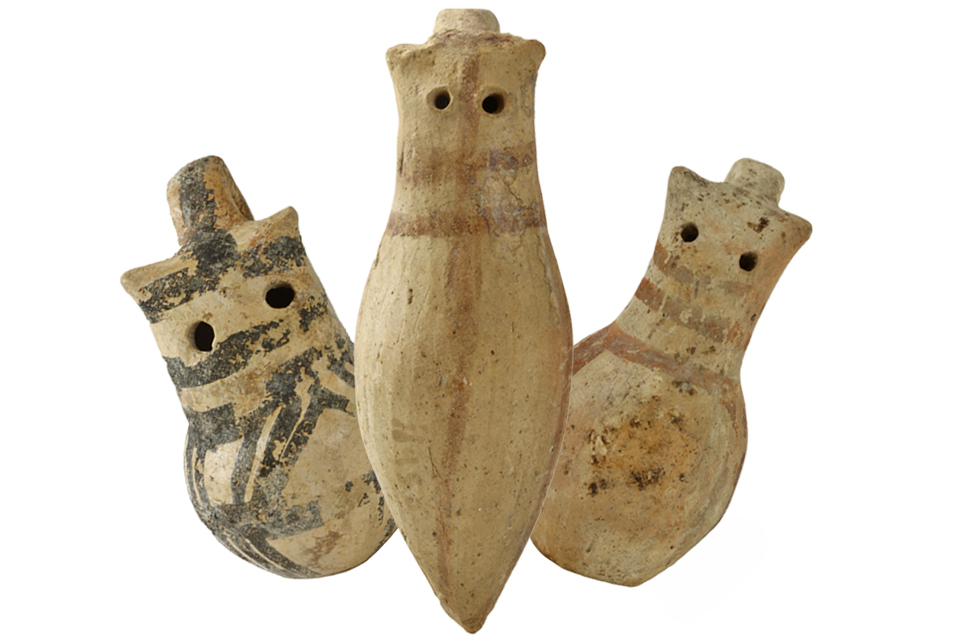Exhibit of the month
“Sleep little baby…”
Animal-shaped clay rattles
National Archaeological Museum, Collection of Cypriot Antiquities, inv. nos. 11956, 11957, 11958.
Provenance: Cyprus
Dimensions: [11956] Height: 14.2 cm, [11957] Height: 8.9 cm, [11958] Height: 9.4 cm.
Date: Late Cypriot I (1600-1450 BC)
Location of display: Exhibition of Cypriot Antiquities, Room 64, Showcase 1.
The three rattles of the Cypriot Collection of the National Archaeological Museum belong to the oldest and most representative specimens of the type. They have an oval body –one of them elongated-, a raised handle and the features of a cat or an owl, while inside them small seeds or metal beads produce the characteristic ringing with shaking. Similar objects have been found in shrines dedicated to female deities, probably by women who wished to have a child.
From antiquity until today, the game accompanies our most beautiful moments, starting from our birth. This is indicated by the dozens of objects, rattles, spinning tops, slings, balls and puppets -physical or in representations-, which differ little from modern toys, despite the huge time distance that separates them. The especially diligent making and the elaborate decoration in most of them show the sensitivity and love with which people of all periods approached the tender age of childhood.
The babies’ first toy was as it is today, the rattle, not only because it could lullaby or keep them engaged but also because it was their first contact with sound and music, which in many cultures was considered to be a deterrent, casting out evil spirits. Clay rattles have been archaeologically identified from as early as the 2nd millennium BC., in the Eastern Mediterranean, Egypt and Central Europe.
In ancient Greece too, the rattle (platagi[1]) usually took the form of an animal or a bird. Tender moments between the mother or the nurse and the baby holding a rattle have been preserved on dozens of vessels, while Aristotle, in one of his many references to toys, informs us that platagi was conceived by the philosopher and inventor Archytas of Taranta, to prevent babies from causing damages at home (Politics, 8 1340b, 25-35).
[1] From the verb πλατάσσω (platasso) which means to produce sound by percussion.
Dr. E. Konstantinidi-Syvridi
Bibliography:
Beaumont, L. Childhood in Ancient Athens: Iconography and Social History. Routledge Monographs in Classical Studies, London/New York 2012.
Karagiorgis, V. Ancient Cypriot art in the National Archaeological Museum. N.P.Leventis Foundation, Athens 2003, 49-50.
Plati, M. Playing in Ancient Greece… with Lysis and Timarete, N. P. Goulandris Foundation, Museum of Cycladic Art, Athens 2009.
Vasilopoulou, E. Το παιδί και το παιχνίδι στην αρχαία ελληνική τέχνη. Παιδαγωγική προσέγγιση. Diss. Thessaloniki 2003.


